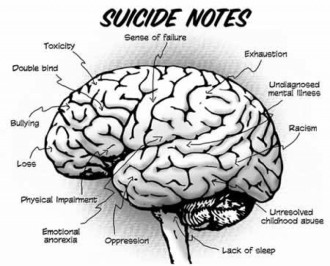Suicides at the young age are still a serious problem. Every year in the US, thousands of teenagers commit suicide. Suicide is the third leading cause of death between the ages of 15-24, and the sixth leading cause of death at the age of 5-14.
Adolescents sometimes experience intense feelings of anxiety, confusion, lack of self-confidence, and have various fears as they grow older. For some adolescents, suicide may seem like a solution to anxiety and the troubles that trouble them. Depression and suicidal ideation are mental disorders that can be successfully treated. Initially, parents need to recognize early and accept that the child or teen suffers, so they can make a real difference in diagnosing and designing the right treatment. When parents are not sure if their child is actually experiencing any serious difficulty, psychiatric assessment may be very helpful.
Some elements that parents may notice in a teenager who might think of harming themselves are: change in eating habits or sleep, withdrawal from friends, family, and routine activities, reactionary behavior or anger explosions , use of drugs and alcohol, neglect of personal appearance, significant change of personality, permanent boredom, difficulty in concentrating attention, even dropping school performance, frequent reports of bodily discomforts such as stomach headaches, easy fatigue, etc., loss of interest in activities that were pleasant in the past.
A teenager who plans to commit suicide may also complain that he is a bad man, making statements like: "I will not be a problem for much longer, I am nothing, I am useless" and throw away important items. He may suddenly be happy after a period of sadness or show symptoms of psychosis (hallucinations or strange thoughts). If a child or teen says he wants to commit suicide, his environment, he must take it very seriously and immediately seek the help of a qualified mental health professional.
Thus, with appropriate therapeutic planning, intervention and support for the family and adolescent, the symptomatology subsides and the adolescent continues his or her course towards adulthood.

